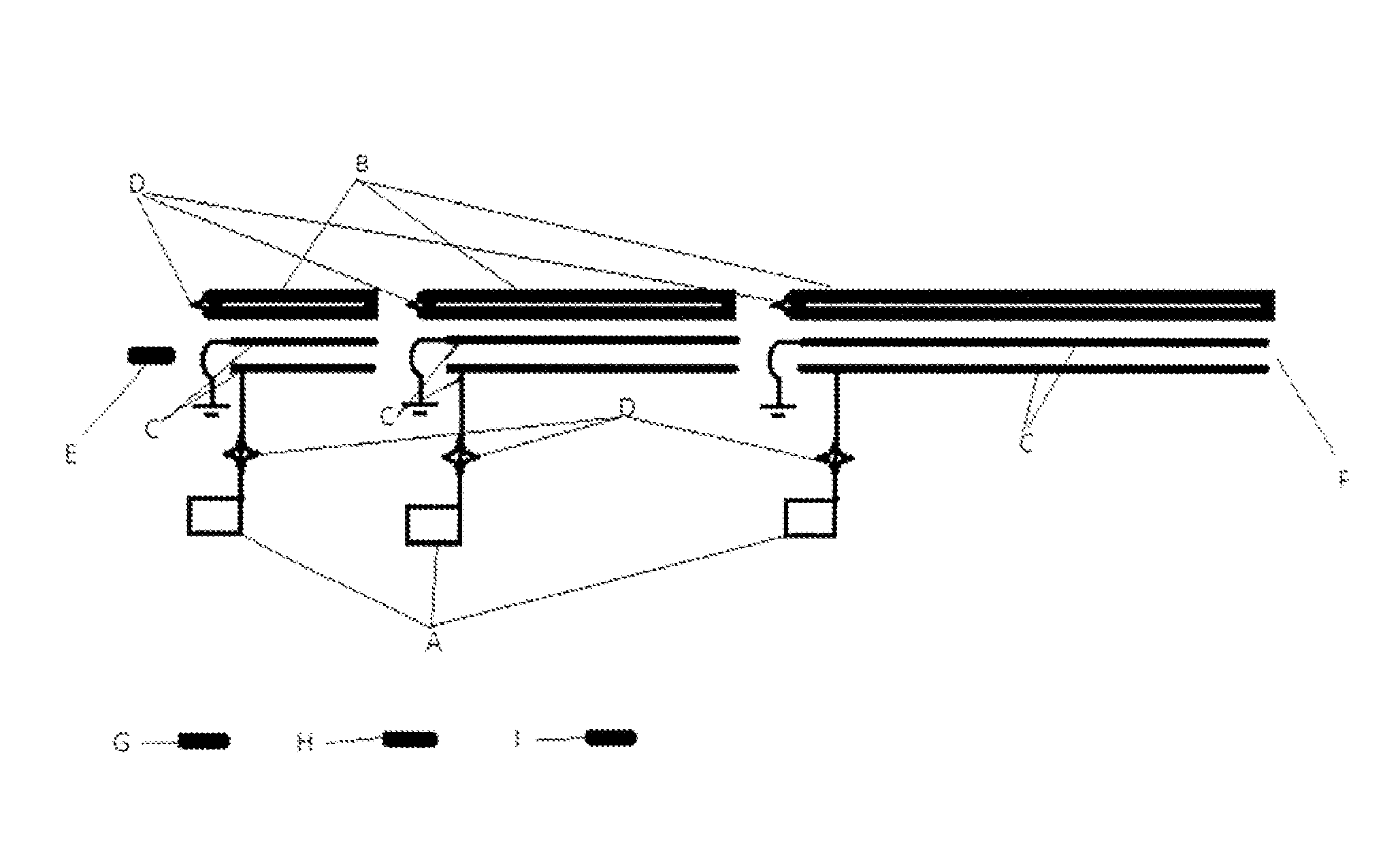Traveling wave augmented railgun
a railgun and travel wave technology, applied in the direction of launching weapons, cosmonautic vehicles, transportation and packaging, etc., can solve the problems of rail erosion, secondary arc and power leakage, and less than desirable moisture accretion in high-voltage environments
- Summary
- Abstract
- Description
- Claims
- Application Information
AI Technical Summary
Benefits of technology
Problems solved by technology
Method used
Image
Examples
Embodiment Construction
[0043]The best mode contemplated by the inventor of the rail gun with principle rail energization and fielding derived from a co-traveling energy pulse is comprised of at the basic system unit level, of a rail element plus associated transmission line structure and related power supplies and switching assemblies. That is a rail segment.
[0044]The global system is typically made up of a sequenced series of rail segments. The number of rail segments in a sequence is determined by requirements such as deliverable exit velocity, tolerable acceleration, aero-shell design mass and related aperture requirement and costing.
[0045]Each rail segment is comprised of a rail element plus matched power supply. Close-coupled to rail element of rail segment is a transmission line structure designed to provide for a spatially limited, relative to rail element length, co-traveling with armature current, and thus magnetic field, pulse [FIG. 1, A, B, C, D, E]. This is accomplished by appropriate design m...
PUM
 Login to View More
Login to View More Abstract
Description
Claims
Application Information
 Login to View More
Login to View More - R&D
- Intellectual Property
- Life Sciences
- Materials
- Tech Scout
- Unparalleled Data Quality
- Higher Quality Content
- 60% Fewer Hallucinations
Browse by: Latest US Patents, China's latest patents, Technical Efficacy Thesaurus, Application Domain, Technology Topic, Popular Technical Reports.
© 2025 PatSnap. All rights reserved.Legal|Privacy policy|Modern Slavery Act Transparency Statement|Sitemap|About US| Contact US: help@patsnap.com



